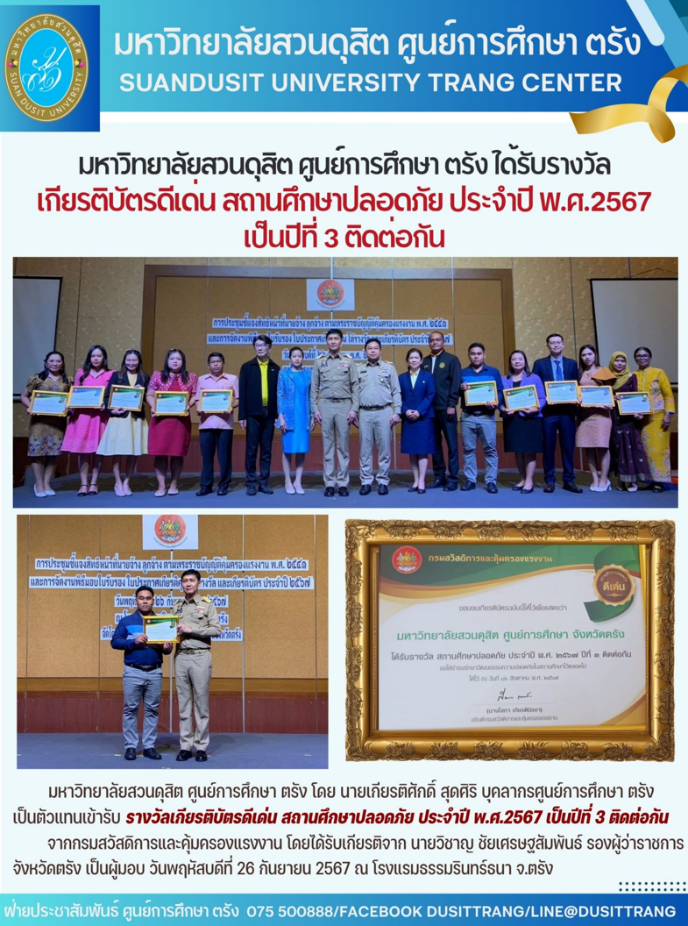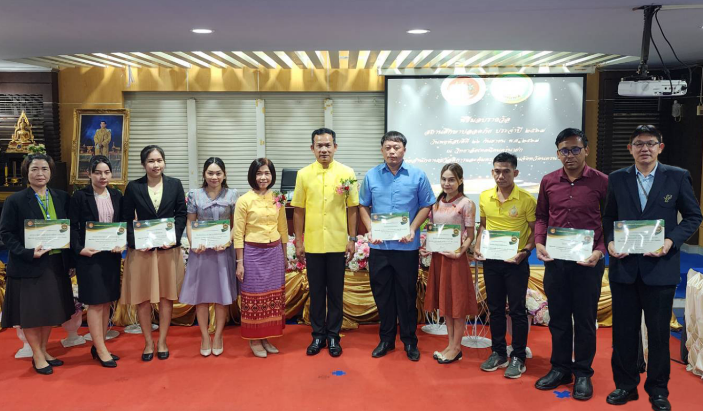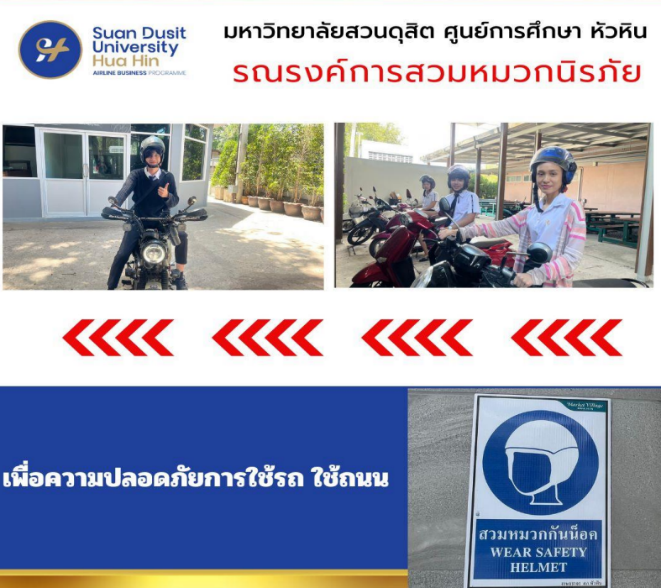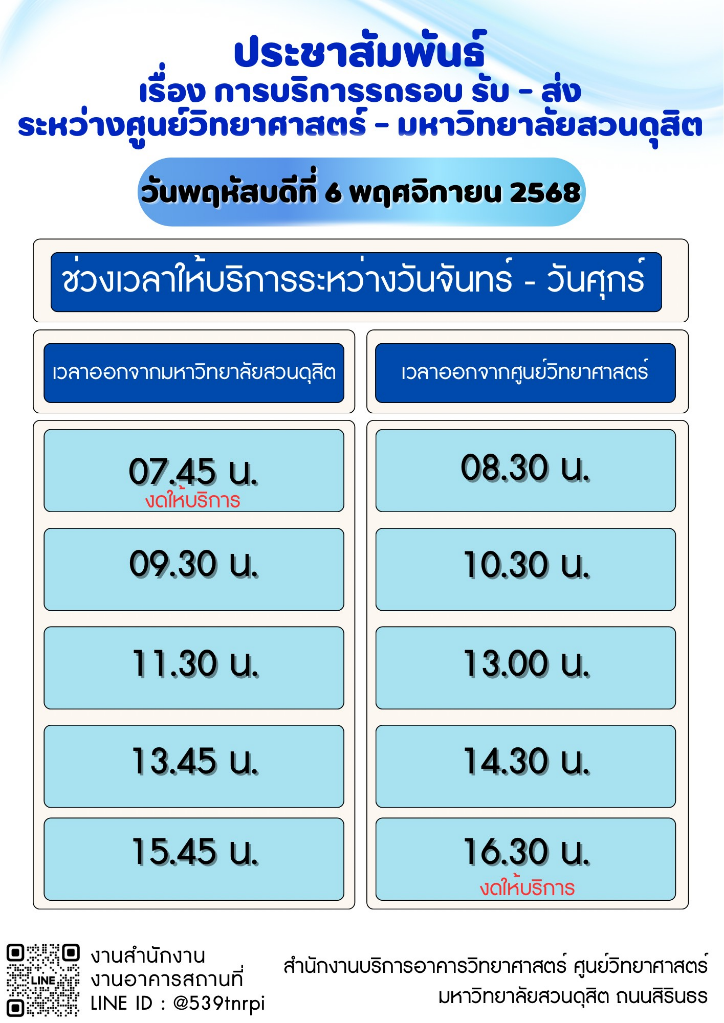Suan Dusit University has clearly established environmental policies that are directly linked to sustainable mobility, as stated in its official documents and communication channels, emphasizing the “promotion and enhancement of transportation services for staff and students.” This is identified as a key component of the university’s environmental, energy, and resource management. The policy was first publicly announced in 2017. https://green.dusit.ac.th/policies/ It was further revised in the 2022 Policy on Environmental, Energy, and Resource Management of Suan Dusit University. https://sdg.dusit.ac.th/2023/3190/ It is currently incorporated into the Suan Dusit University Declaration of Commitment to Advancing the Sustainable Development Goals (SDGs) under Sustainability Dimension 3: Environment and Natural Resources (Planet). https://planning.dusit.ac.th/main/wp-content/uploads/2024/11/sdg-move-1.pdf Announced on 24 September 2024.
In addition, the university has advanced initiatives on occupational safety, health, and working environment, with the policy first announced in 2018 and continuously implemented to the present.
Safety is the foundation of sustainable mobility.
In 2024, Suan Dusit University, including all campuses, educational centers, and the La-or Uthit Demonstration Schools, received the “Safe Educational Institution” award from the Department of Labour Protection and Welfare. In particular, the Bangkok campus has received the award for six consecutive years (2019–2024), and the Suphanburi campus for five consecutive years, reflecting a systematic approach to environmental and safety management across learning spaces.
Within the evaluation criteria, there is a category concerning “traffic and transportation safety within educational institutions,” listed under Section 2: Safe Educational Institution and Good Health, Item 28, which specifies that the area must include measures ensuring safety in travel and circulation.




Operational Procedures for Ensuring Travel Safety within Suan Dusit University
Suan Dusit University places strong emphasis on “travel safety” for students, staff, and all visitors. The university has integrated the guidelines from “Safe Educational Institution and Good Health”, Item 28, into its spatial management plans across campuses, educational centers, and the La-or Uthit Demonstration Schools, in order to create a safe, orderly, and sustainable travel environment.
This work is carried out under the supervision of the Central Occupational Safety, Health, and Working Environment Committee (OSH Committee) and corresponding committees in each area. The operational process consists of the following key steps and measures:
Traffic Route and Service Point Management within the Campus
Each area has planned and organized vehicle routes and pedestrian pathways, with traffic signs, parking zones for cars and motorcycles, and designated pick-up/drop-off points for students and passengers. Staff members are stationed at key points to provide assistance during peak hours, and traffic routes are regularly communicated to all users to ensure orderly movement and reduce the risk of accidents. This is carried out under the “Zero Accident Campus” policy.
100% Helmet-Wearing Campaign
The university and the La-or Uthit Demonstration Schools have continuously implemented the “100% Helmet-Wearing” campaign. Activities include awareness-raising and compliance checks at campus entrances/exits and motorcycle parking areas, in order to instill a culture of safety and foster a sense of responsibility for one’s own life and the lives of others.
Physical Improvements to Roads and Walkways
Facilities management units across all campuses regularly repaint markings, resurface roadways, and clearly designate traffic signs, parking spaces, and pedestrian crossings. These measures enhance safety for both vehicle users and pedestrians, help reduce accidents, and contribute to improving the campus landscape.
Communication and Wayfinding Signage
Directional signs and traffic markers are installed throughout all areas to facilitate safe and convenient movement for users. Additionally, information is disseminated through digital media and the online communication channels of each educational center to promote awareness and encourage participation from all stakeholders.



Promotion of Sustainable Mobility and Reduction of Private Vehicle Use
Suan Dusit University places strong emphasis on managing the travel of students, staff, and personnel on campus, particularly by reducing the use of private cars in order to decrease emissions, ease congestion, and promote safe and environmentally friendly travel. To support these goals, the university provides a Shuttle Service to facilitate travel between key locations, as follows:
• Route connecting the Science Center (Bang Phlat District) and Suan Dusit University (Dusit District) A scheduled van service operates regularly to support the mobility of students, faculty, and staff—reducing private vehicle use and enhancing travel safety in the city area.
• Shuttle service for nursing students during clinical training Transportation is provided directly between training hospitals and the residence at the Science Center to ensure safety during field practice, reduce individual travel, and lessen financial burdens for students.
• Suphanburi Educational Center shuttle service between the university campus and urban areas of Suphanburi This daily service facilitates commuting for students and staff while reducing the number of motorcycles and private cars on campus.
These measures are key to promoting a Shared Mobility system within the university, which contributes to:
• Reduction of greenhouse gas emissions (GHG Reduction)
• Reduced traffic volume and congestion
• Increased safety for students and staff
Advancement of the “Green & Clean University” approach in alignment with SDG 11: Sustainable Cities & Communities


The implementation of all the above measures reflects Suan Dusit University’s approach to “sustainable mobility in educational settings,” which not only emphasizes physical safety, but also encourages a culture of responsible travel that is environmentally friendly and supportive of the well-being of all individuals.
